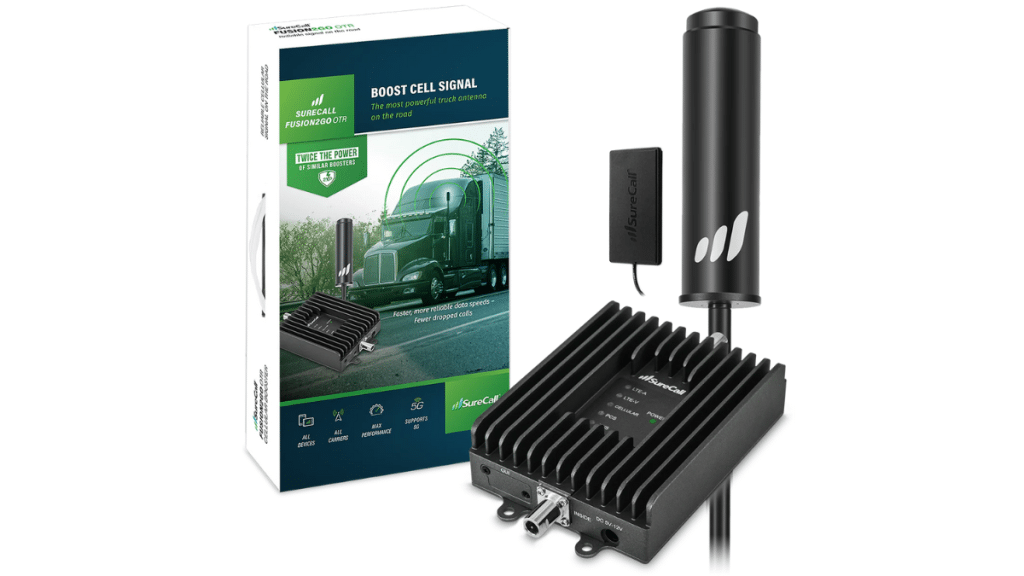If you’ve ever stood by a window, stretched your phone toward the ceiling, or stepped outside just to send a text or make a call, you already know how frustrating weak cell reception can be. Whether you’re working from home, traveling, or simply trying to stay in touch with family, a poor signal isn’t just an inconvenience, it can disrupt your life.
In many cases, installing a phone booster can dramatically improve reception by amplifying the existing signal and redistributing it throughout your home, vehicle, or office. But how do you know when it’s time to take that step? Here are three clear signs that you may need a signal booster.
1. You’re Constantly Dropping Calls or Missing Texts Indoors
This is the most common, and most obvious, sign that your signal needs help. If you frequently lose calls in the middle of conversations or texts take minutes to send (or fail entirely), your phone is struggling to maintain a reliable connection.
Common symptoms:
- Incoming calls go straight to voicemail even when your phone is “on”
- Texts are delayed or show “not delivered”
- Calls are muffled, choppy, or cut out frequently
- You have to move to a specific room or window just to make a call
These issues are often caused by building materials that block or weaken cell signals. Concrete, brick, metal roofs, insulation, and even energy-efficient windows can all interfere with reception.
A signal booster can solve this by pulling in the outdoor signal with an external antenna, amplifying it, and rebroadcasting it indoors, giving you more bars and better performance, even deep inside your home or building.
2. You Have Strong Signal Outside, But Weak Signal Inside
Here’s a useful test: step outside your building and check your signal strength. Then compare it to what you get inside. If your signal drops significantly once you walk through the door, your issue isn’t with your cell carrier, it’s with signal penetration.
Why this happens:
- Exterior walls block or absorb cellular signals
- Metal siding and roofing reflect signal instead of allowing it in
- Basement or interior rooms sit too far from windows or entry points
This kind of signal loss is common in both older buildings with thick construction and modern structures that use materials designed to block heat (and, unintentionally, cell signals). If your phone works perfectly in the driveway but drops out at your desk, you’re a prime candidate for a booster system.
Signal boosters help by capturing the usable signal from outside, where reception is stronger, and delivering it where you need it, whether that’s your kitchen, your home office, or a back bedroom.
3. Your Phone’s Battery Drains Quickly from Constant Searching
Your phone is designed to stay connected. When signal is weak or inconsistent, it works overtime trying to find and hold onto the nearest tower. This constant scanning burns through battery life, and it’s a hidden sign of signal trouble.
Watch for these red flags:
- Your battery drains unusually fast indoors, even when not in use
- Your phone feels warm from searching for signal
- Airplane mode or restarting the device temporarily improves performance
Even when you’re not actively using it, your phone pings the network regularly. In areas with weak coverage, this search becomes a power-hungry loop, leaving your phone drained by mid-afternoon.
A signal booster provides a strong, stable connection, which helps your phone maintain contact without overworking. That means better call reliability, faster data, and even improved battery life over time.
Bonus Sign: You Travel or Work in a Rural or Low-Coverage Area
If you live in a remote region, travel for work, or spend time in areas with limited tower access, a signal booster can be essential. In rural zones, even a small amount of outdoor signal can be amplified enough to power your phone indoors or on the road.
Vehicle boosters, in particular, are great for RVers, truckers, and commuters who need reliable service while on the move. They work the same way, capturing available signal outside the vehicle and amplifying it inside for clearer calls and faster data, even in patchy zones.
Final Thoughts
Dropped calls, dead zones, and inconsistent bars aren’t just annoying, they’re signs that your environment is working against your mobile signal. If any of the above symptoms sound familiar, it’s time to consider a signal booster.
Whether you’re dealing with thick walls, rural coverage gaps, or just need your phone to perform better indoors, a cell signal booster is a reliable, one-time investment that can make your phone, and your life, work better, anywhere you go.

